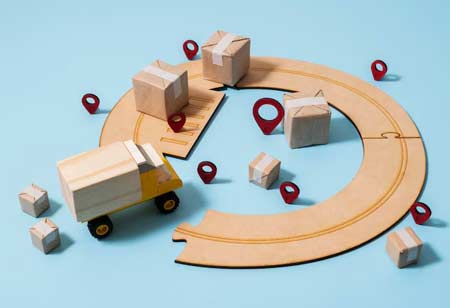THANK YOU FOR SUBSCRIBING
THANK YOU FOR SUBSCRIBING

By
Logistics Transportation Review | Friday, August 15, 2025
Stay ahead of the industry with exclusive feature stories on the top companies, expert insights and the latest news delivered straight to your inbox. Subscribe today.
FREMONT, CA: The cold chain, a complex network responsible for safely transporting and storing temperature-sensitive products, has experienced significant transformation over the centuries. From the rudimentary icebox to the advanced IoT-driven systems of today, the industry has evolved to meet the growing demands of a globalized economy and heightened consumer expectations.
Preserving perishable goods through cold temperatures involved using natural ice harvested from frozen lakes and rivers. This ice was packed around food items to maintain cool temperatures. However, this approach had significant limitations, as seasonal ice supplies often needed to be more reliable.
The advent of mechanical refrigeration in the late 19th century marked a pivotal moment in the history of cold chain logistics. This breakthrough technology enabled the creation of controlled environments for storing and transporting perishable goods. Although early refrigeration systems were large and energy-intensive, they represented a significant step forward.
The development of refrigerated rail cars and trucks in the early 20th century revolutionized the transportation of perishable products over long distances. This innovation allowed fresh food to be distributed to broader markets and helped reduce food waste.
The mid-20th century saw further advancements in refrigeration technology, leading to more efficient and compact units. This development spurred the growth of the cold chain industry, particularly in the food and pharmaceutical sectors. As globalization accelerated, the cold chain became increasingly complex, necessitating the transport of temperature-sensitive products across continents. This placed immense pressure on the industry to develop robust and reliable systems.
The IoT Revolution in Cold Chain Logistics
Integrating Internet of Things (IoT) technology has significantly transformed the cold chain landscape in recent years. IoT devices, such as sensors and trackers, now provide real-time temperature, humidity, and location data, enabling precise monitoring and control of the supply chain.
The Key Benefits of IoT in Cold Chain Logistics
Real-time visibility is greatly enhanced as IoT sensors track products throughout the supply chain, offering up-to-date information on their condition and location. Further, advanced temperature control is achieved through sensors that monitor fluctuations, alerting stakeholders to potential issues and preventing product spoilage. Predictive maintenance is facilitated by IoT data, which can forecast equipment failures, thereby minimizing downtime and reducing maintenance costs. Additionally, supply chain optimization is improved as companies can analyze data from IoT devices to enhance efficiency and lower costs. Finally, food safety is bolstered by IoT-enabled traceability, which helps identify the source of contaminated products, protecting consumers and improving brand reputation.
Future trends in cold chain logistics are poised to include several significant advancements. There will be an increased emphasis on sustainable practices, aiming to reduce environmental impact by adopting energy-efficient technologies and eco-friendly packaging. Automation will play a critical role, with the integration of robotics and automated systems enhancing efficiency and accuracy in warehouse operations. Blockchain technology is expected to improve transparency, security, and traceability within the supply chain. Innovative solutions for last-mile delivery will also be developed, focusing on the efficient and reliable transportation of temperature-sensitive products directly to consumers' homes.
I agree We use cookies on this website to enhance your user experience. By clicking any link on this page you are giving your consent for us to set cookies. More info





